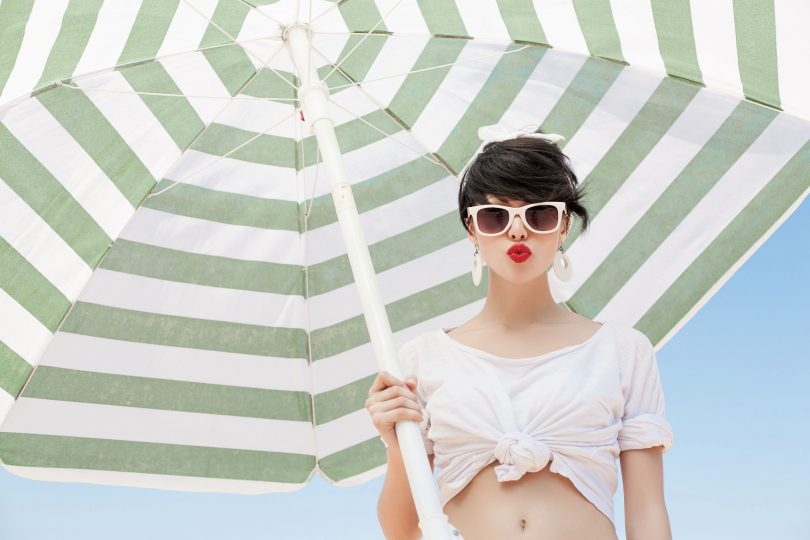As we all know, sun exposure is the source of many aesthetic skin problems from sunburn to hyperpigmentation and photoaging.
Most people have the misconception that UV-induced skin problems specially affect fair skin types because they produce less melanin (which is true), but the dark skin phototypes are in fact more susceptible to hyperpigmentation problems and dyschromia. The explanation is quite simple, darker skin phototypes have all the elements to produce more melanin and any unbalance of these elements can cause excessive synthesis of melanin that would ultimately lead to the formation of dark spots, melasma, or uneven pigmentation.
The most common types of UV-induced hyperpigmentation are:
MELASMA
Diffuse brownish patches that primarily appear as a result of hormonal changes but intensify and become noticeable after chronical sun exposure.
SOLAR LENTIGO
Well defined dark spot that can vary from light brown to black. Their severity depends on sun exposure.
Nowadays, thanks to the advances in aesthetics treatments and dermocosmetics these dark spots can be significantly attenuated or completely removed.
They are not only more common but also more difficult to treat in dark skin types.
PREVENTION TIPS
To reduce the chances of dark spots and prevent them from getting darker, use sunscreen every day, even when sun is not that strong.
SKIN PHOTOTYPE
As mentioned above, the fairer the skin the less amount of melanin, so more need to use high SPF. Phototypes I and II (fair skin types) should preferably avoid direct sun exposure and use SPF 50+ the whole summer. Phototypes III should use 50+ when sun is extreme and can reduce to SPF 30+ under softer conditions. Phototypes IV to VI can use SPF 25 to 30 to go to the beach and lower levels when UV radiation is not that strong.
In addition, as the face is the most exposed area of the body, we recommend all skin phototypes to carry a small bottle of invisible SPF 50+ in your handbags all summer long to protect the crucial areas every day and wear a hat or cap for long sun exposure.
For more information about your skin phototype and the SPF to use, have a look to a previous post here.
ENVIRONMENT
Your holiday destination is also an essential factor to consider when choosing your sun cream.
If you go to the mountains bear in mind that sun becomes more harmful with altitude. According to the World Health Organization for every 1000m of altitude UV levels increase a 10%. Physical filters are highly recommended in this case.
If you go to the beach reapply sunscreen every two hours even on cloudy days and remember that solar radiation is stronger in countries near the equator.
Many surfaces reflect UV radiation turning it more damaging to human skin.
While grass, soil or water reflect less than a 10%, sand can reflect around a 15%, and seafoam a 25%. The strongest is by all means the snow that can double the damaging effects of UV rays.
If you are an outdoors person, the ideal is having different sunscreens for different circumstances. Remember that physical filters are more visible but also more effective.


